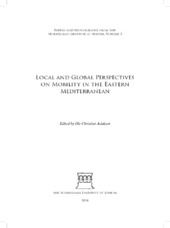The Mycenaeans and Europe: long-distance networks and cross-cultural communication
Chapter
Permanent lenke
https://hdl.handle.net/1956/24293Utgivelsesdato
2016Metadata
Vis full innførselSamlinger
Sammendrag
In the 2nd millennium BC cultural, social and political entities of a new kind and scale came into existence and transformed Europe into a distinct cultural zone, where intense and dynamic interactions between local, regional and ‘global’ processes of change intersected with increased social connectivity and mobility. The presence of artefacts made of non-local raw materials in archaeological contexts indicates that mechanisms for the import of essential goods and other forms of cross-cultural exchange have existed throughout prehistory. Therefore the archaeological evidence provides an excellent proxy for studying questions related to socio-political organisation, cultural boundaries, communication networks and mobility of people, goods, technologies, and ideas. This contribution discusses relations between the Mycenaeans and the societies of temperate Europe in the mid 2nd millennium BC. Although long-distance interactions may have often been indirect, societies across Europe, from the Mediterranean all the way to Scandinavia, were incorporated into vast communication networks that linked them together.
